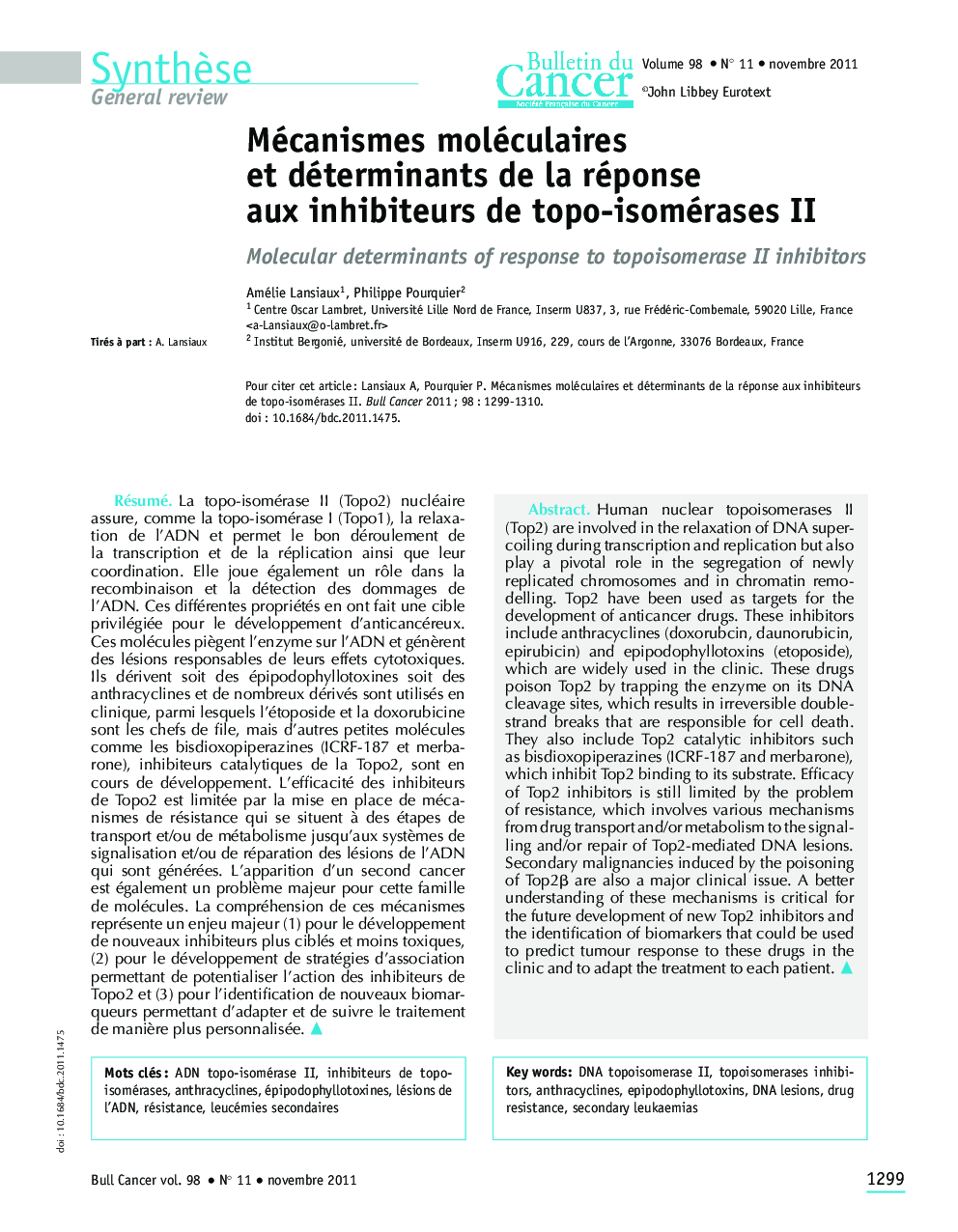| Article ID | Journal | Published Year | Pages | File Type |
|---|---|---|---|---|
| 3979143 | Bulletin du Cancer | 2011 | 12 Pages |
Abstract
Human nuclear topoisomerases II (Top2) are involved in the relaxation of DNA supercoiling during transcription and replication but also play a pivotal role in the segregation of newly replicated chromosomes and in chromatin remodelling. Top2 have been used as targets for the development of anticancer drugs. These inhibitors include anthracyclines (doxorubcin, daunorubicin, epirubicin) and epipodophyllotoxins (etoposide), which are widely used in the clinic. These drugs poison Top2 by trapping the enzyme on its DNA cleavage sites, which results in irreversible double-strand breaks that are responsible for cell death. They also include Top2 catalytic inhibitors such as bisdioxopiperazines (ICRF-187 and merbarone), which inhibit Top2 binding to its substrate. Efficacy of Top2 inhibitors is still limited by the problem of resistance, which involves various mechanisms from drug transport and/or metabolism to the signalling and/or repair of Top2-mediated DNA lesions. Secondary malignancies induced by the poisoning of Top2β are also a major clinical issue. A better understanding of these mechanisms is critical for the future development of new Top2 inhibitors and the identification of biomarkers that could be used to predict tumour response to these drugs in the clinic and to adapt the treatment to each patient.
Related Topics
Health Sciences
Medicine and Dentistry
Oncology
Authors
Amélie Lansiaux, Philippe Pourquier,
